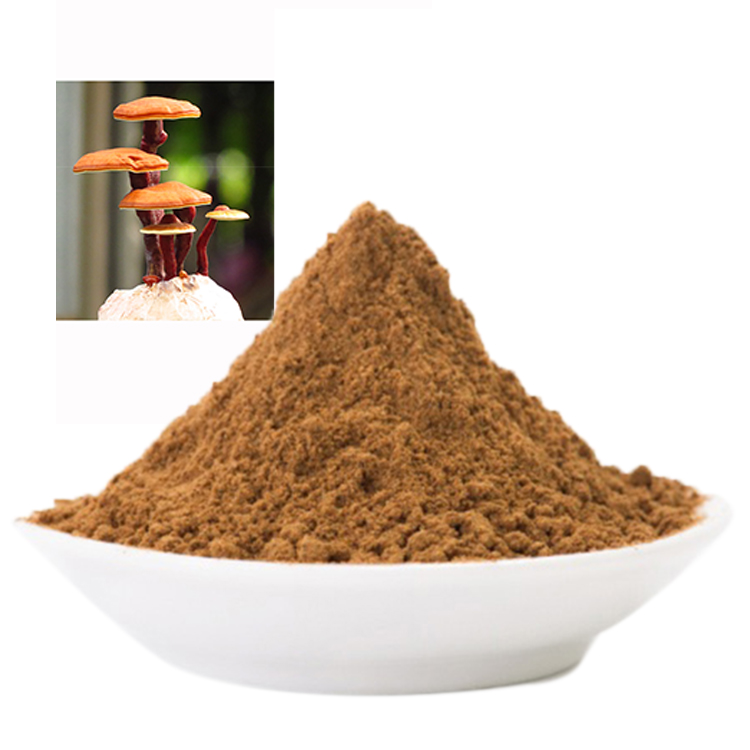As global demand for Reishi mushroom (Ganoderma lucidum) soars—fueled by products like USDA Certified Ganoderma Powder, Organic Mushroom Extract Powder, and Organic Red Ganoderma Powder—questions about sustainability and environmental responsibility have come to the forefront. Eco-friendly Reishi farming isn’t just about going organic; it’s about regenerative agriculture, waste reduction, forest conservation, and the intelligent use of modern technology. In this in-depth guide, we reveal how leading producers create high-quality Organic Reishi Mushroom Powder and Ganoderma Extract Powder while safeguarding our planet.
1. Organic Cultivation: Beyond Chemicals and Toward Regeneration
Organic Certification and Its True Meaning
When you see the label “USDA Certified Ganoderma Powder,” it means the Reishi was grown without synthetic fertilizers, pesticides, or herbicides. Organic growers utilize composting, crop rotation, and biological pest control to nourish the soil and avoid chemical runoff that harms local ecosystems.Substrate Innovation: Using Agricultural Waste Wisely
Traditional Reishi cultivation often uses hardwood logs, but eco-conscious farms are innovating with agricultural byproducts (like corncobs, rice straw, or sawdust) as growing substrates. This approach reduces waste and provides additional income for local farmers while keeping landfills free of decomposable material.Regenerative Practices for Long-Term Soil Health
Crop rotation, companion planting, and cover crops prevent soil depletion, improve moisture retention, and enhance biodiversity. After harvest, spent mushroom substrate is often returned to fields as organic matter, closing the nutrient loop.
2. Resource Efficiency: Water, Energy, and Climate Impact
Water Conservation and Smart Irrigation
Leading Reishi farms use rainwater harvesting, drip irrigation, and moisture sensors to optimize water use and minimize waste. Some operations recycle water used for cleaning and extraction, dramatically reducing freshwater demand.Renewable Energy Adoption
Solar panels and biomass boilers are increasingly used to power drying, processing, and climate-control systems for mushroom houses. By minimizing fossil fuel use, farms producing Organic Mushroom Extract Powder shrink their carbon footprint.Low-Emission Transport and Local Sourcing
Farms that work with regional suppliers for their substrates and packaging materials reduce transportation emissions. Products like Organic Reishi Mushroom Powder are often produced closer to point-of-sale, supporting local economies and reducing supply chain miles.
3. Forest Stewardship and Biodiversity
Wild-Harvested vs. Cultivated: Protecting Native Ecosystems
Wild-harvested Reishi can threaten native mushroom populations and disrupt forest ecosystems. Sustainable farms focus on controlled cultivation, sparing wild stocks and supporting forest health.Integrative Agroforestry
Some pioneering producers grow Reishi alongside trees in forested plots (agroforestry), restoring degraded land, providing shade, and encouraging animal and plant diversity.Habitat Restoration Initiatives
Farms may plant native trees or create pollinator habitats around their facilities. Maintaining green buffer zones helps preserve the local environment for future generations.
4. Eco-Friendly Processing and Packaging
Green Extraction Methods
Extraction for powders like Ganoderma Extract Powder increasingly uses water- or ethanol-based methods rather than harsh chemicals. Low-energy drying (such as solar or dehumidified air) preserves nutrients with minimal energy use.Sustainable Packaging
Recyclable, biodegradable, or compostable packaging materials are favored by top brands producing USDA Certified Ganoderma Powder and Organic Red Ganoderma Powder. Labels made with soy-based inks, minimal plastic, and bulk packaging options further reduce waste.
5. Transparency, Certification, and Community
Third-Party Certification
Look for independent verification—USDA Organic, EU Organic, or FairWild certifications ensure eco-friendly and ethical practices. USDA Certified Ganoderma Powder and other certified products must meet strict standards for farming, processing, and packaging.Traceability and Full Disclosure
Leading brands share their farming location, cultivation methods, and environmental practices openly, often through QR codes or online portals. This transparency builds trust and lets buyers support farms that match their values.Fair Trade and Community Impact
Sustainable Reishi farms often pay fair wages, invest in local infrastructure, and offer education or wellness programs for workers. Sourcing Organic Mushroom Extract Powder from ethical suppliers has social as well as environmental benefits.
6. The Real-World Impact: Success Stories and Future Innovations
Closed-Loop Farming
Some Reishi operations have achieved nearly zero waste, recycling all byproducts and energy internally. Spent substrate is converted into animal feed, compost, or biogas.Research and Development
Ongoing studies focus on using even less energy, increasing yields, and discovering new symbiotic cultivation strategies. Cultivators of Organic Red Ganoderma Powder are experimenting with vertical farming to maximize space and resources.Consumer Role
By choosing products like Organic Reishi Mushroom Powder, consumers drive demand for sustainable practices across the supplement industry. Certifications and transparent labeling empower buyers to vote with their wallets for a healthier planet.
Conclusion
Sustainable Reishi farming isn’t just possible—it’s rapidly becoming the industry standard, led by certified producers of USDA Certified Ganoderma Powder, Organic Mushroom Extract Powder, Organic Reishi Mushroom Powder, Ganoderma Extract Powder, and Organic Red Ganoderma Powder. From regenerative agriculture and water conservation to responsible sourcing and packaging, eco-friendly practices are ensuring the future of this ancient healing mushroom—while protecting the planet we all share.
Read More:
Real Consumer Feedback on Ganoderma Extract: Honest Reviews & Global Insights
Thirty Days on Ganoderma Extract: What Changed in My Body?
Precautions and Contraindications When Taking Ganoderma Extracts: A Comprehensive Guide
Hangzhou Molai Biotech Co., Ltd has supply capacity 1200+ tons per year for mushroom powders and extracts, including the mushroom mycelium from modern technology of Deeply Liquid Fermentation and fruiting bodies from the grown real mushrooms to meet the different markets.
Hangzhou Molai Biotech Co., Ltd supplies the products both in Powders and Extracts for commercial using worldwidely, such as Cordyceps Sinensis, Cordyceps Militaris, Maitake Mushroom, Lion’s Mane Mushroom, Turkey Tail Mushroom, Reishi Mushroom, Chaga Mushroom etc.
We offer OEM and ODM services, could extract the products according to your special requirements, process the powders/extracts into Capsules, Tablets, Small Bags, Mushroom Bars, Mushroom Coffee etc.
Organic Lion's Mane Mushroom Extract
Organic Reishi Mushroom Extract
Organic Cordyceps Militaris Extract
Organic Turkey Tail Mushroom Extract
Organic Chaga Mushroom Extract
Organic Shiitake Mushroom Extract
Organic Maitake Mushroom Extract
Organic Tremella Mushroom Extract






